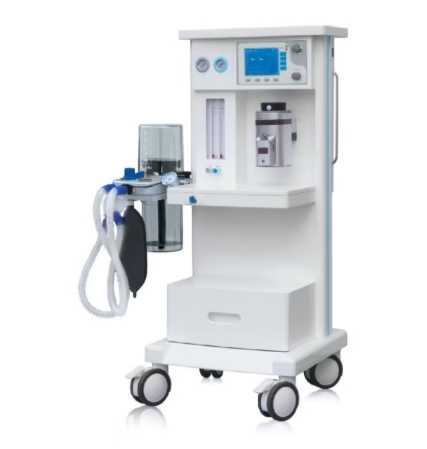Selecting the right operating theatre equipment supplier often feels like walking through a maze for many hospital managers. The operating room is one of the most demanding areas in any medical facility—everything revolves around safety, precision, and smooth teamwork. A tiny glitch in a surgical light, a delayed lift on a table, or a noisy suction device can ripple through the entire schedule and unsettle the whole team.
In reality, hospitals with the same budget can end up with completely different levels of equipment stability. And the same device can deliver very different experiences depending on the supplier behind it. Most of these differences come from the supplier’s qualification system, manufacturing capacity, project experience, and after-sales support.
Why Choosing the Right Operating Theatre Equipment Supplier Matters
An LED shadowless lamp that doesn’t maintain steady brightness makes the surgeon adjust angles more often.A surgical table that hesitates slightly during elevation forces the anesthesia team to reposition the patient.A suction unit that runs too loud interrupts communication again and again.
These tiny “imperfections,” when added up, affect workflow efficiency, infection control, and even equipment lifespan.
Just as importantly, after-sales service, spare parts availability, and project coordination from the supplier shape long-term OR operations far more than many people expect.
This is why choosing a supplier is not simply a price comparison—it is a comparison of total value + reliable delivery capability.
How to Evaluate Operating Theatre Equipment Suppliers
Below are the core criteria hospitals care about most—each one can significantly change the outcome of a procurement project.
1. Assess Supplier Credentials
A capable operating theatre equipment supplier should have:
lISO 9001 & ISO 13485 quality management systems
lCE, FDA, or other recognized certifications
lEstablished factories and stable production lines
lProven hospital project experience
lLong-term reputation and industry presence
Example: ARI
ARI operates three major production bases across Anhui, Jiangsu, and Guangdong, covering more than 50,000 m² of manufacturing space. The company has maintained ISO 9001 and ISO 13485 certification for years, serves 500+ hospitals in China, and exports to over 100 countries.
A supplier that consistently passes international audits and handles global hospital projects is usually one you can trust with high-stakes delivery.

2. Evaluate Product Range and Quality
An operating theatre is a complete ecosystem. Ideally, one supplier should be able to provide:
lLED shadowless lamps
lOperating tables
lAnesthesia machines
lMonitoring systems
lCeiling pendants
lSuction equipment
lSurgical microscopes
lElectrosurgical units
lSterilization and cleaning systems
Example: ARI’s coverage includes:
lSurgical Lamps – e.g., VYD02-5+5 (100,000 Lux, LED lifespan ≥30,000 h)
lOperating Tables – VOT-01 electric model with 304 stainless-steel build
lCeiling Pendants – T.IB system with German-standard gas terminals
lSuction units, drills, microscopes, imaging systems, sterilizers
lSolutions for full OR and hospital equipment packages, including installation guidance and staff training
A broad and unified product line dramatically reduces operational friction for hospitals.
3. Investigate Reliability and Real-World Performance
Medical devices must withstand heat, cleaning routines, constant movement, and long operational hours.
A dependable supplier should show:
lReal case studies from hospitals
lMulti-year reliability data
lClear testing standards
lAging tests, extreme temperature tests, and durability checks
Example: ARI
All ARI equipment undergoes 72-hour high–low temperature aging tests before shipment. This type of consistent, batch-level testing is something many suppliers claim but few actually execute meticulously.
4. Review Customer Support and After-Sales Service
After-sales service shapes the true cost and usability of OR equipment throughout its lifecycle:
lInstallation & commissioning
lUser training
lSpare parts availability
lTechnical response speed
lOn-site and remote support
lWarranty terms
Example: ARI’s commitments
l2-year warranty for major equipment
l14-month warranty for X-ray equipment
l8+ years of guaranteed spare parts supply
l24-hour initial response time
lOn-site and remote international training support
Clear and transparent after-sales policies are crucial for long-term OR stability.
5. Compare Pricing and Total Value
Budget always matters, but the lowest upfront price rarely means the lowest long-term cost.
Hospitals should factor in:
lDevice lifespan
lDowntime caused by failures
lCost of consumables
lMaintenance fees
lUpgrade options
lSupplier continuity
Some suppliers appear inexpensive initially but incur heavy repair and replacement expenses later.
ARI positions itself as high-value with stable performance, which is why many Ministry of Health projects abroad choose ARI—its lifecycle cost is lower even if the unit price isn’t the cheapest.
6. Check Compliance & Regulations
Every country has different standards, such as:
lMedical electrical safety requirements
lGas terminal specifications
lShadowless lamp illuminance standards
lCleanroom requirements
lCE, FDA, and regional certifications
ARI’s product lines hold CE, FDA, and other global certifications and have been included in several United Nations procurement projects.
Top Operating Theatre Equipment Supplier
1.Tech
Focuses on imaging + navigation systems.
Strength: High technological depth
Limitation: High budget requirement
2. Nova Systems
Offers standard OR devices like lamps, tables, monitors.
Strength: Broad product catalog
Limitation: Slower model updates
3. CleanRoomX
Specialized in ceiling pendants and medical gas systems.
Strength: Strong modular design abilities
Limitation: Requires coordination with other suppliers
4. Bio Medical
Provides sterilization systems (B-class autoclaves, UV disinfection units).
Strength: Budget-friendly
Limitation: Suitable mainly for single-item purchases
5. ARI
One of China’s major hospital equipment groups, supplying OR devices, imaging systems, lab equipment, sterilization solutions, and full hospital packages—plus OEM/ODM services.
ARI advantages:
l20+ years of manufacturing experience
lLarge-scale production bases
lISO13485, CE, FDA certifications
lUsers in 100+ countries
lStrong presence in health ministry projects
lLong-term spare parts availability (≥8 years)
lSuitable for hospitals seeking full OR equipment sets with reliable support
Conclusion
A dependable supplier should offer:
lA complete product range
lStrong factory and quality systems
lVerified certification and testing
lMulti-country project experience
lRobust technical and after-sales support
lClear and long-term warranty commitments
Whether you’re building a new OR, expanding capacity, or upgrading outdated equipment, using the seven criteria above will eliminate 90% of procurement risks.
For hospitals looking for a one-stop solution—from surgical lamps and tables to pendants, suction devices, imaging systems, and sterilization units—suppliers like ARI, with full product coverage, global certifications, and stable delivery capacity, can make the entire project far easier and more predictable.
FAQ
Q1:How long should a reliable supplier offer spare parts?
A:Ideally 5–8 years or more.ARI provides at least 8 years, which is higher than many competitors.
Q2:What is a reasonable warranty period for surgical equipment?
A:Major OR equipment should come with at least 2 years of warranty.
X-ray or autoclave units may have slightly shorter terms, normally around 12–14 months.ARI offers 2 years for main devices and 14 months for X-ray units.
Q3:Can one supplier deliver a full operating theatre setup?
A:Yes, but only if the supplier has a complete product line, strong production capacity, and proven hospital project experience.
ARI is one of the manufacturers capable of supplying a full OR equipment package, including OEM/ODM services and complete hospital-level delivery support.





